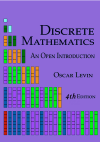Multisets are the more natural way to think of this problem since each handful is a multiset of flavors. So for example we could have,
\begin{equation*}
\{R, R, G, G, G, B, B, B, B, Y\}
\end{equation*}
meaning you got two red, three green, four blue, and one yellow jelly bean (and no purple or orange), or
\begin{equation*}
\{R, R, R, R, R, R, R, R, R, R\}
\end{equation*}
which means you got ten red jelly beans. You could also have
\begin{equation*}
\{R, G, B, Y, P, O, O, O, O, O\}
\end{equation*}
meaning you have one each of red, green, blue, and yellow, and five orange jelly beans.
The corresponding sequences of six numbers summing to 10 are
\begin{equation*}
2,3,4,1,0,0; \qquad 10,0,0,0,0,0; \qquad 1,1,1,1,1,5\text{.}
\end{equation*}
(We added commas between numbers since not every number is a single digit.) Notice that for this representation we need to agree on a fixed order of the flavors, which was not alphabetical in this case, but the same order we used when listing the multisets.


